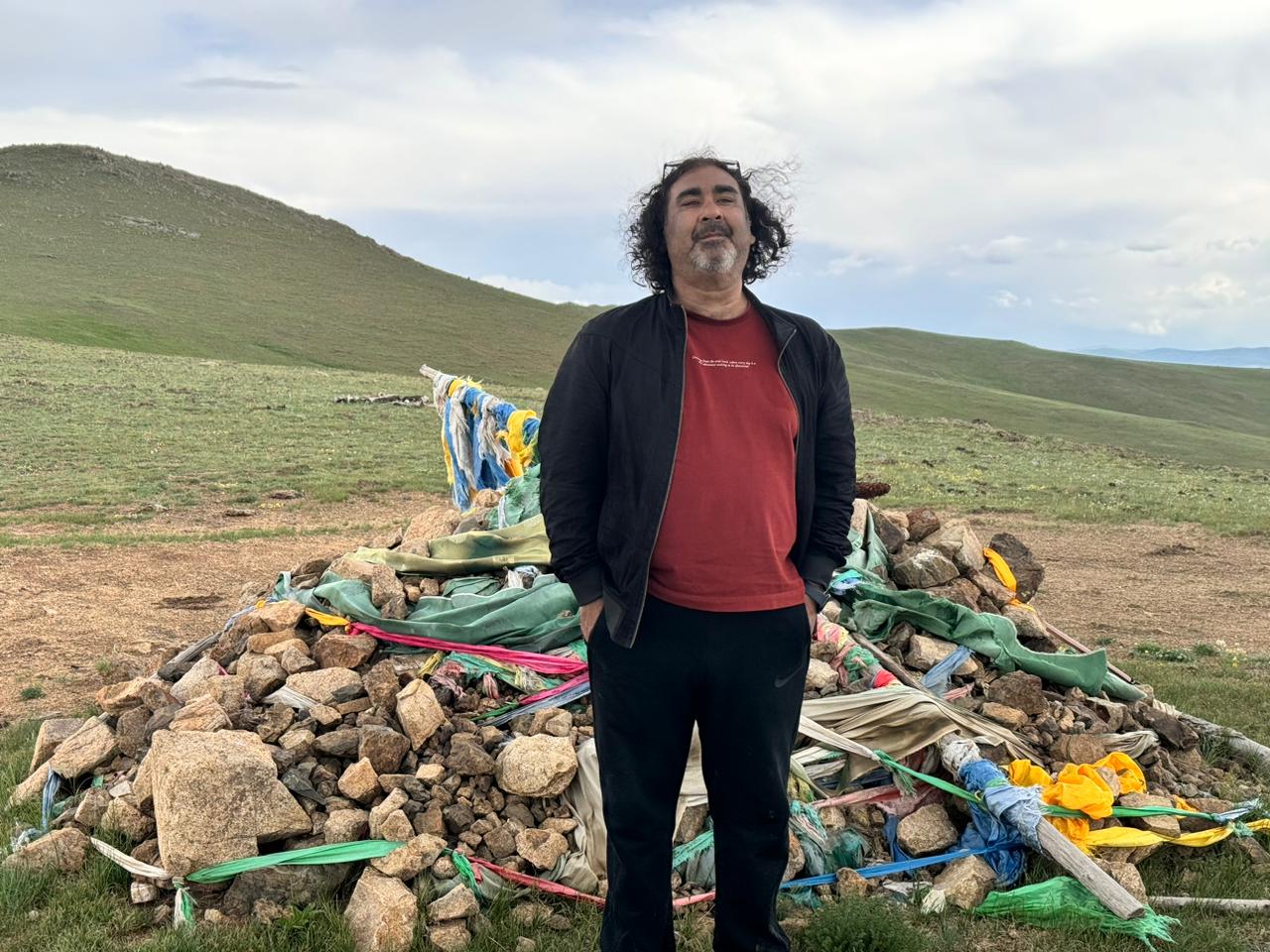Ovoo, oboos are cairns used as border markers or shrines in Mongolian folk religious practice and in the religion of other Mongolic peoples. While some ovoos simply consist of a mound of stones, most have branches and khadag stuck into them. In the absence of stones, ovoos can be made entirely of branches, or even soil or sand. Ovoos are often found at the top of mountains and in high places like mountain passes. In modern times, some of them have developed into large and elaborate structures, becoming more like temples than simple altars. They serve mainly as sites for the worship of Heaven and lesser gods led by shamans and kins’ elders, but also for Buddhist ceremonies.
I most enjoyed trekking upto the most fascinating waterfalls in Mongolia called the Orkhon Waterfalls this is a waterfall of breathtaking beauty in the Uvurhangai province. It was formed almost twenty thousand years after a unique combination of earthquake and Volcanic eruptions . In the summer the waterfall is gushing with water . Their is wet grassy forest land around the waterfall and one can trek deep into the forest area as well .The waterfall falls from a height of 27meters .
The Orkhon River is 1124 km long making it the longest river in Mongolia and the waterfalls are just a beautiful; extension of the river .
The Orkhon Waterfall








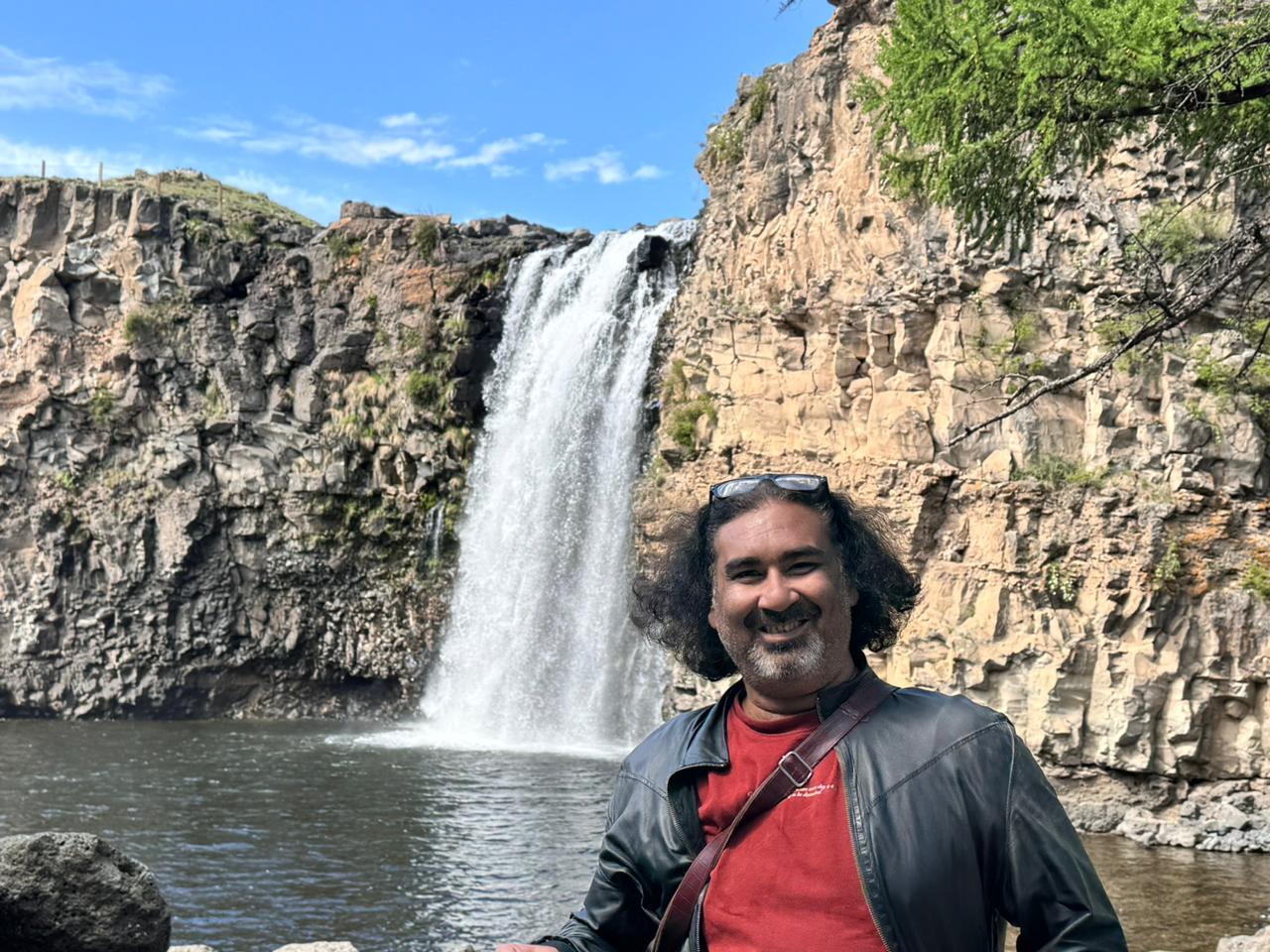









The most fascinating aspect of Mongolia is its rock paintings, and I had ample opportunity to explore them at Tavanbogd National Park. These paintings, which include the Shiveet Kharkhan rock paintings, date back to more than five thousand years and provide insight into the art of that era. The rock paintings, etched on dark brown rock, depict horses, oxen, tigers, sheep, and camels. They depict hunting scenes, and I also saw a rock painting of a snow leopard.
Rocking





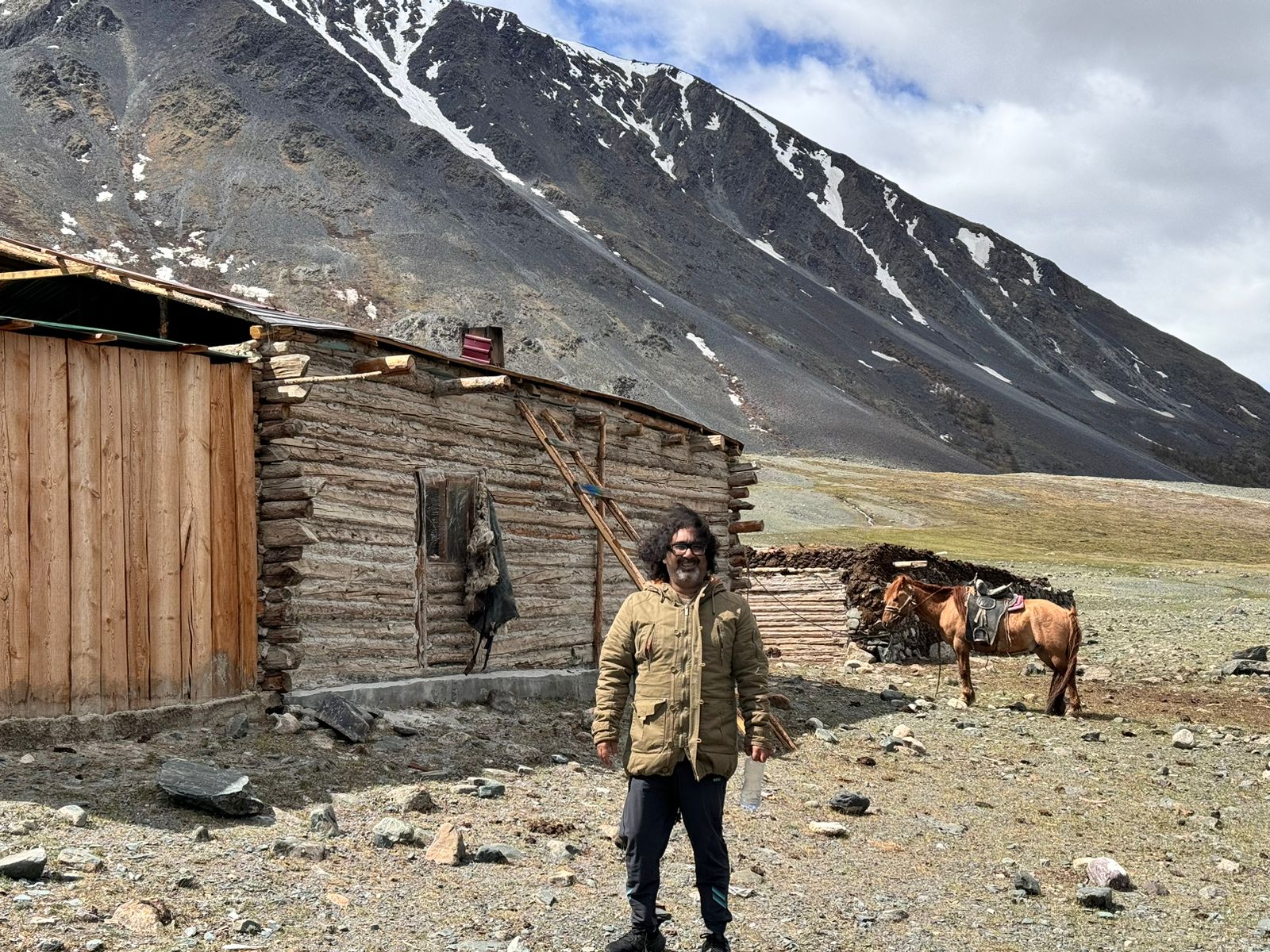














The Shiveet Kharkhan rock paintings are in the Ulgii Province. This beautiful province is surrounded by high-altitude mountains with snow-capped peaks. I covered the entire area on horseback and even managed to take a dip in one of the fast-flowing rivers. Due to the extreme cold, some of the rivers were also frozen, making it easy for me to walk over the riverbed as the water was completely frozen.
These paintings were created and etched on slate rocks by nomadic sheep herders and ancient Mongolian hunters. Most of the region is nomadic, where local sheep herders live in gers. They also keep yaks and live off nature. To generate heat and keep themselves warm, they burn yak dung. They freeze yak milk as curd, and I was served this delicacy when I stayed with one of the nomadic families in Ulgii Province. I stayed in a ger for over four days and got the real feel of the Mongolian nomadic life.
Continue ReadingI traveled through the rough, rocky terrain of Bayan-Olgii Province and Olgi City in a Russian van famously known as the Bukhanka, which, when translated from Russian, means “a loaf of bread.” The van indeed resembles a loaf of bread. This van was one of the toughest vehicles I have ever traveled in. It endured deep stress, navigated through rocks and boulders, and climbed steep cliffs and rough mountains with ease.
UAZ-452


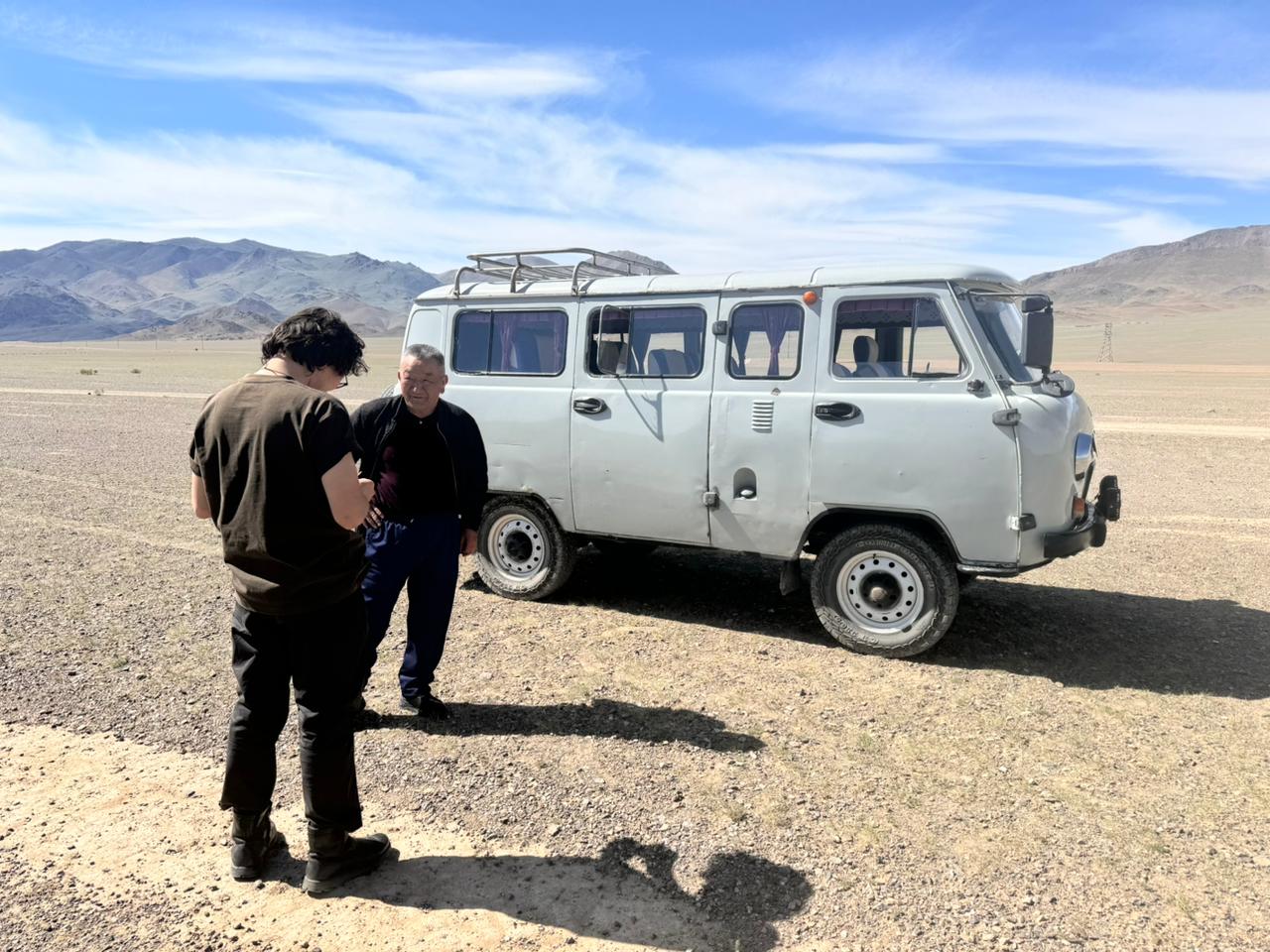





I would sit quietly at the back, enjoying the music blaring out of the Bukhanka. It was a rocky ride as the van would reverberate. It felt like getting a natural massage; by the end of the journey, all my body parts had quite a workout. Also known as the UAZ-452, the Bukhanka was first manufactured in 1965 in Ulyanovsk, Russia. It is a four-wheel drive with a five-speed manual transmission, best suited for the rough mountains we had to navigate as we moved further into the wilderness of Mongolia.
This is no pretend truck made to instill a bogus sense of ruggedness — this is a rock-and-stick-simple Russian truck made to travel on bad roads to distant locations with primitive maintenance facilities.
I felt safe in this beast of a vehicle, and we were able to navigate the treacherous terrains of Mongolia with ease, thanks to the Bukhanka UAZ-452.
Continue ReadingThe Erdene Zuu Monastery is one of the oldest and earliest surviving monasteries in Mongolia. It is situated 2 km to the northeast of Kharkhorin City and is adjacent to the ancient city of Kharkhorin. The monastery was founded by Abtai Khan in 1586. It went through periods of neglect and prosperity until the Stalinist Purges in 1937 put it completely out of business.
Zuu


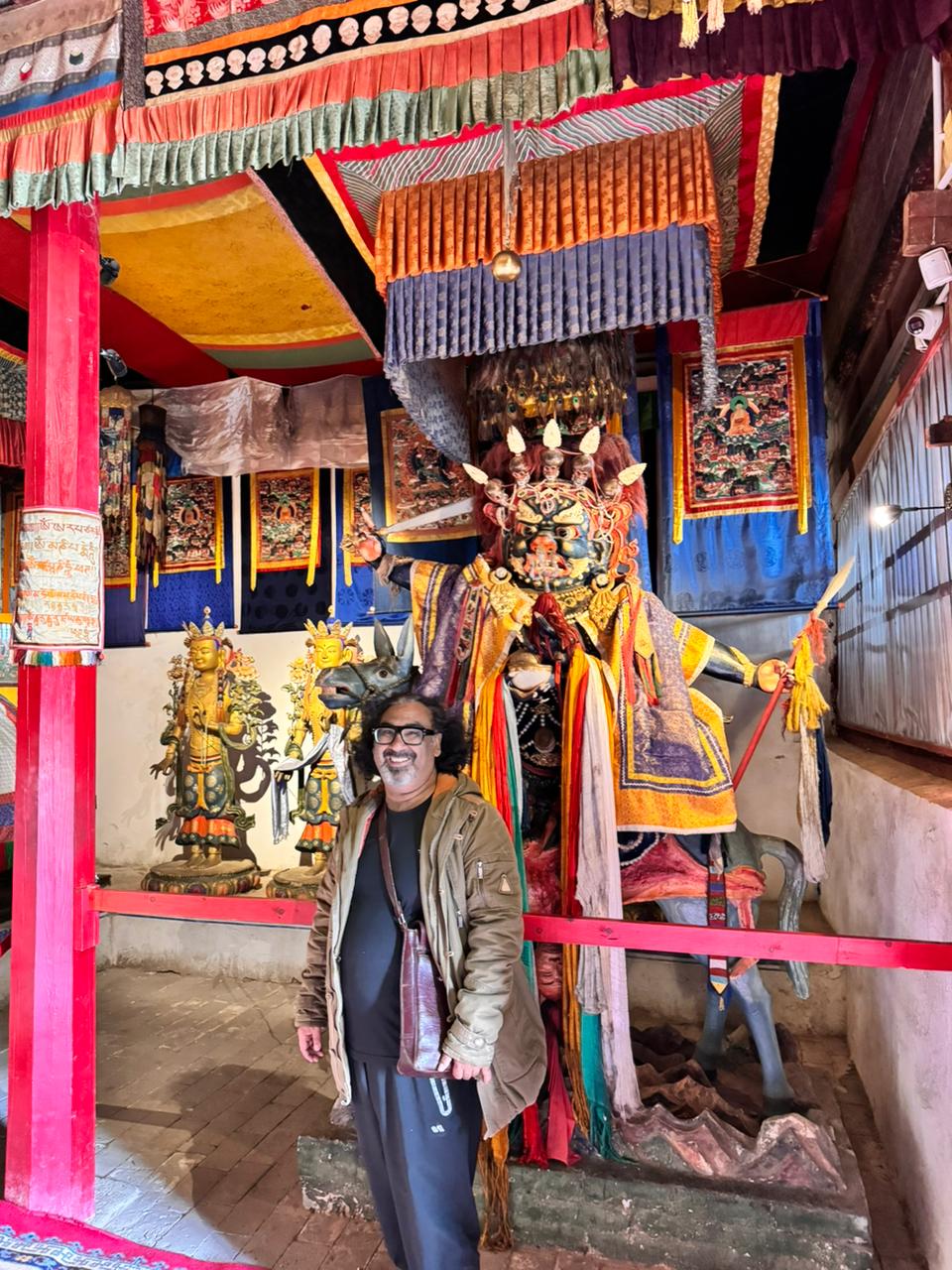

























This monastery provided society with a spiritual outlet and preserved ancient religious art and murals along with idols of Buddhist gods and goddesses. At its peak, it had more than 60 to 100 temples, and over one thousand monks prayed and meditated there. All but three temples were destroyed during the Stalinist Purges, and many of the monks were sent to concentration camps in Siberia, where they died due to ill health or were killed. Artifacts like masks, tsam, and thangkas were saved by soldiers and stored in the houses of locals.
The monastery is enclosed by a walled compound. Spaced evenly along each wall at a distance of 15 meters are 108 stupas. The number 108 is very auspicious for Buddhists and is also the number of beads in a Buddhist prayer mala.
The three temples that were not destroyed during the Stalinist Purge of 1937 are named Zuu of Buddha, Zuun Zuu, and Baruun Zuu. These temples are dedicated to the three life stages of Buddhists: childhood, adolescence, and adulthood.
Baruun Zuu
Inside the courtyard of Baruun Zuu, towards the west, stands a temple built by Abtai Khan and his son. It is dedicated to the adult Buddha. On either side of Sakyamuni are the statues of Sankhya. There is a huge golden wheel at the center, and there are wheel dough cakes called Balin decorated with colored medallions of goat or mutton fat.
Zuu of Buddha
The main central temple is called Zuu of Buddha. The entrance is flanked by the god Ghongoor. The temple also has statues of Noam and Dabba, the sun and moon gods.
Zuun Zuu
The temple to the east is Zuun Zuu, which has a statue depicting the adolescent Buddha. The statue on the right is that of Tsongkhapa, the man who started the Yellow Hat sect of Buddhism. The figure on the left is of Janrising, the Bodhisattva of Compassion.
Along with these temple sites, there are many other interesting things to see in this compound. This includes the gravestones of Abtai Khan and his grandson Tushes Khan. All in all, it will take you an entire day to cover this large and ancient monastery.
Continue ReadingDundgobi is the 21st province of Mongolia. It is approximately 254 km south of Ulaanbaatar, and we moved towards this dry, arid desert land. With my guide Anima by my side, I felt safe and confident that my journey would be pleasant and fruitful. Our mission was to find the White Stupa, also known in the local language as the Tsagaan Suvarga. Dundgobi is the second least populated province of Mongolia. It is also famous for the traditional Mongolian fermented drink called Airag, which is made from fermented horse milk.
From Ulaanbaatar to Dundgobi to The Khongor Sand Dunes







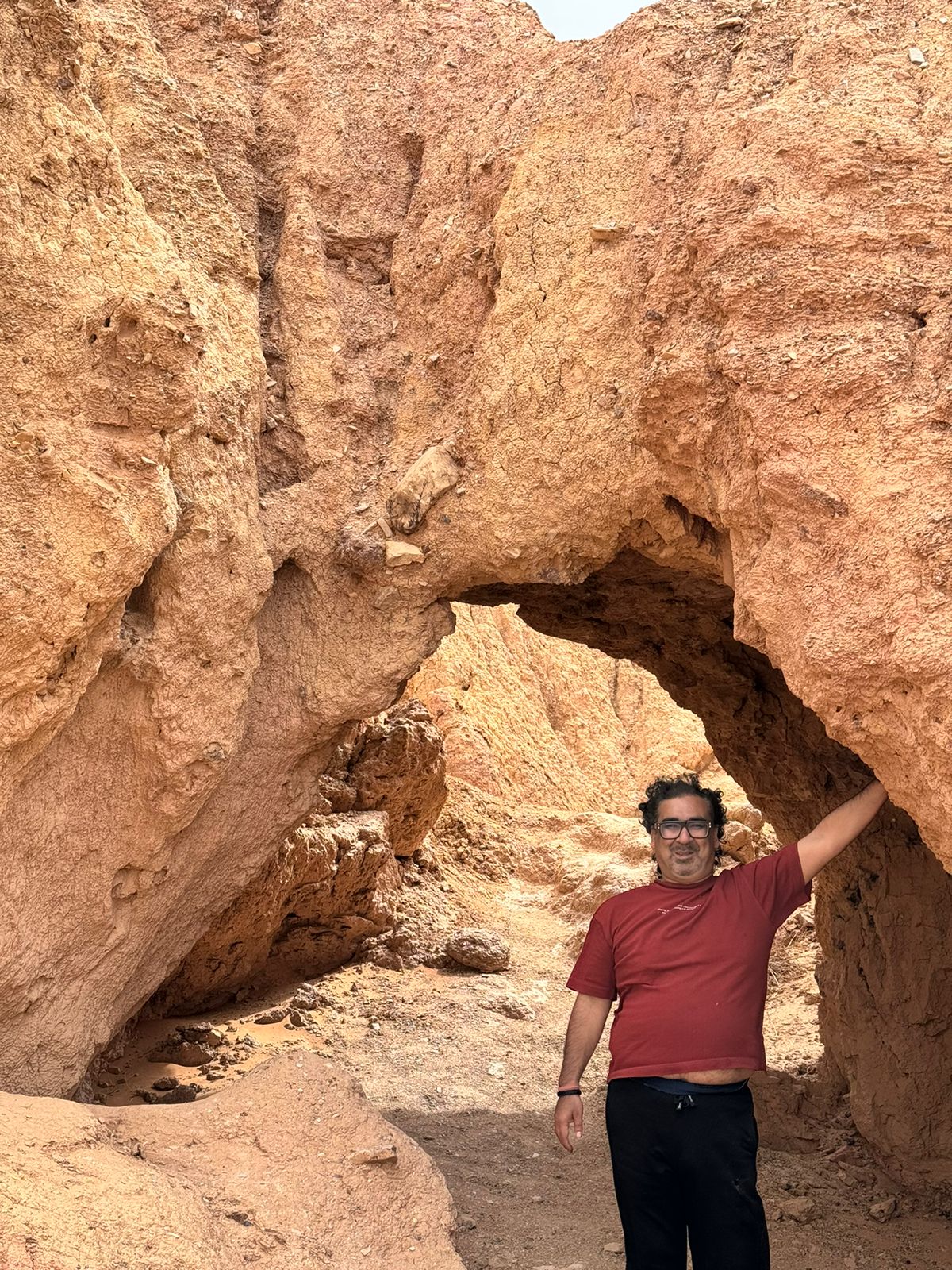


















The White Stupa is 60 meters tall with a width of around 400 meters. The area where it is situated is also known as the Mini Grand Canyon and was once a seabed. It was also an ancient dinosaur land where dinosaurs roamed freely during the Jurassic age.
The entire area has a red sandy look. There are two famous caves that lie 7 km east of the Tsagaan Suvarga. The caves are called Khevtee Bosoo Agui and are a major tourist attraction.
Driving ahead, we also ventured into the Khongor Sand Dunes, which were a hotspot for dinosaur fossils and dinosaur eggs. This is also the most important sand mass, covering an area of more than 900 sq km. The wind constantly blows from the north towards the west, and the dunes can reach breathtaking heights between 100 to 300 meters. The Khongor Sand Dunes are more than 180 km long and can reach a width of 27 km. The dunes are very imposing and are also called the Singing Sand Dunes (Duut Mankhan) due to the noise made by the wind when it moves over the sand. The varied colors and texture of the sand dunes are very beautiful indeed. There is also an oasis in the middle of the sand dunes.
—
Continue ReadingThe Mongolian journey was well and truly underway as I drove with my local tour guide deep into rural Mongolia. The country is very sparsely populated, and I ventured deep into a very sandy area of the country called Mohtok. This is an area full of sand dunes, and it is believed that the locals here eat the sand. They say that the sand dunes here have sand with medicinal qualities that can cure arthritis and help build strong bones. I shot a video of myself eating the sand.
After that, we moved into a ger, which is a tent-like structure. It is the house of most nomadic Mongolian families. The ger is a traditional dwelling that is very common in Mongolia. It is the most popular form of dwelling in rural Mongolia. It is a round tent made of white, durable, and waterproof material, and it is portable so it can be moved around by yaks. The Mongolian ger has two key components: the wooden framework and the felt cover. The wooden framework is called khana, the central support column is known as uni, and the smoke hole is called toono. It has eight separate wooden poles, each ensuring around 1.5 meters are used as ger frames, with just the central column supporting the entire structure. Without its felt and canvas covering, the naked frame looks something like an umbrella. Once the framework has been erected, it is covered with felt and mounted onto wooden floors. The door is always on the southern side, facing the sun, providing more light inside the windowless home.
Eating Sand in Mongolia



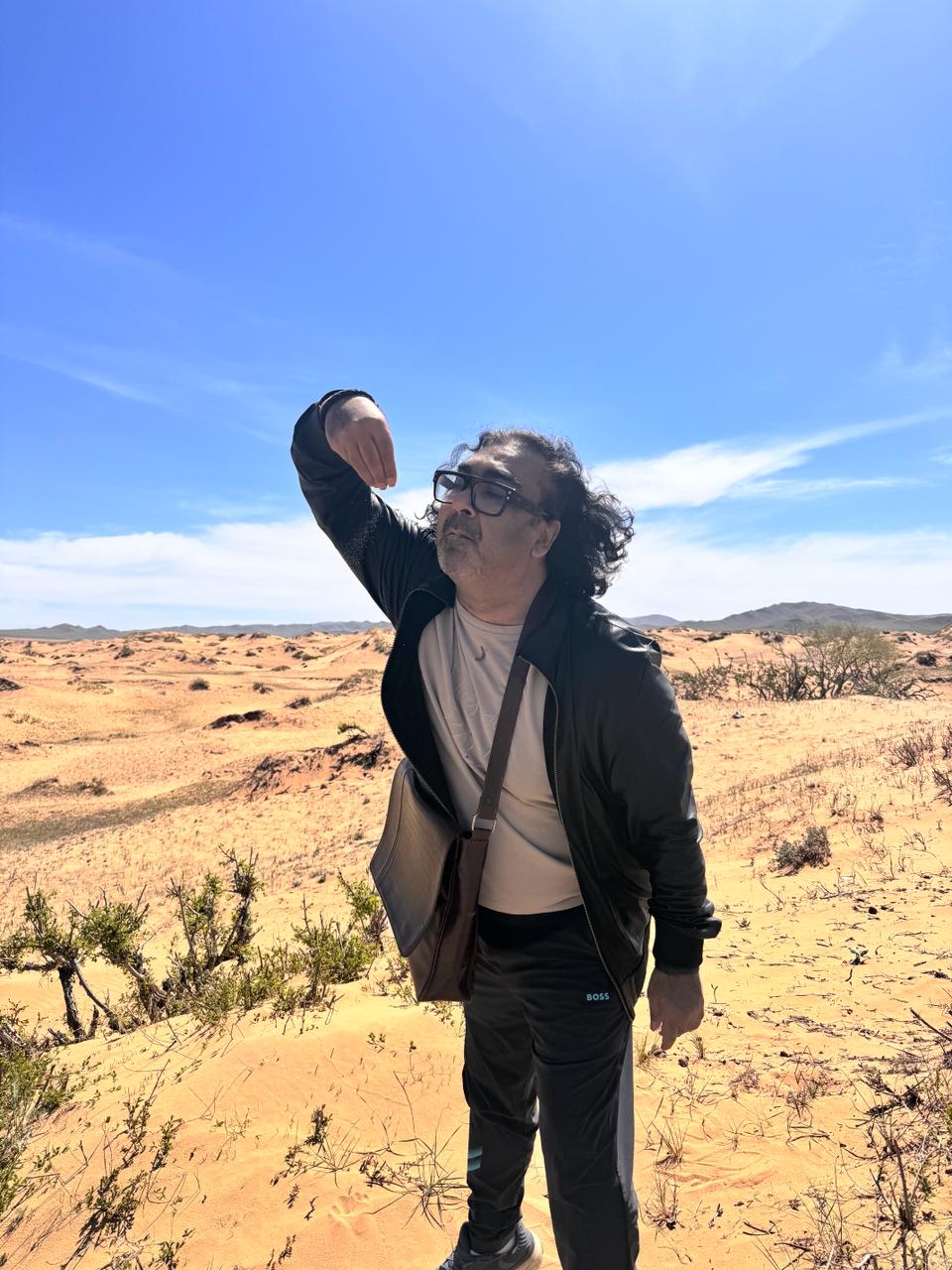


















I spent an entire afternoon with a nomadic family in a ger. They served me flat noodles with vegetables and camel meat and gave me Mongolian milk tea to drink, which was salted. I sat on a wooden bed and chatted with them.
The ger is generally divided into three sections: male and female. There is a third section at the back called khoimor. The khoimor is where valuable objects are stored along with a statue of Buddha or a Buddha shrine. Guests are often invited to sit in the khoimor section. The ger districts usually occupy poor-quality land on the outskirts of town. These people raise cattle, breed horses and camels. They shear the camels for their wool, which they sell; they basically live off the land.
I was also served dried curd, which was sweet in flavor. I enjoyed that with some relish. So enjoy the photographs of how local Mongolians live in gers and their day-to-day lives.
Continue ReadingI got a real taste of Mongolian nomadic life when I ventured into the heart of the Gobi Desert. This was a ger camp in the thick of the desert. As I mentioned, gers are nomadic tents in which Mongolian nomads live, and I had the opportunity to stay in one of these ger camps.
The highlight of my day was riding a camel deep into the heart of the desert as I navigated the sand dunes. I then sat down with a few nomads who were shearing a camel. This was the first time I saw how wool is sheared from a live camel, and I eagerly jumped at the opportunity to shear the large beast myself.
Gobi Desert Khongor






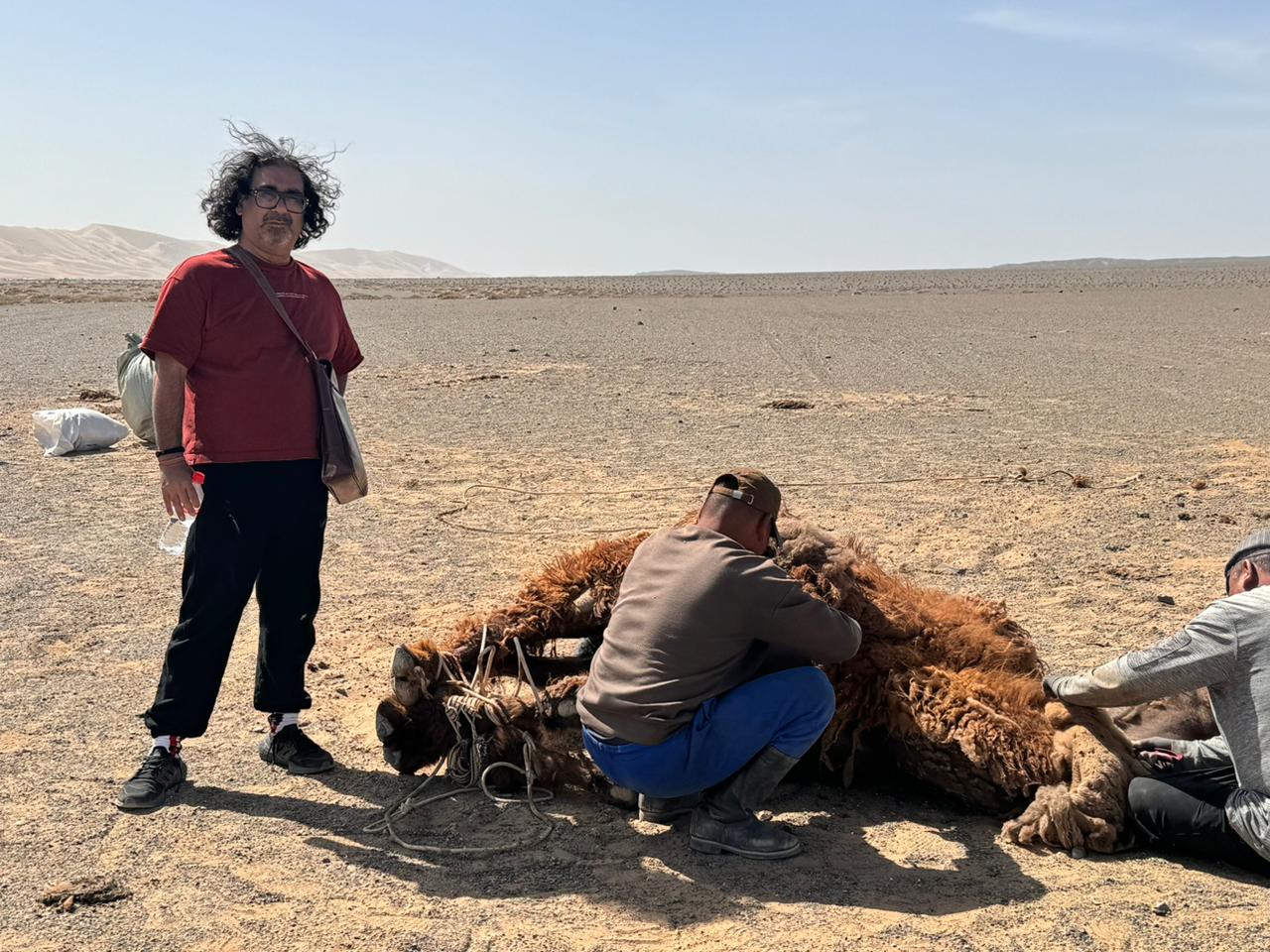















The desert gets really cool at night as loud winds whistle past my ears. Until then, enjoy the pictures and videos of my desert safari in Mongolia.
Continue ReadingThe Mongolian leg of my journey started slow, but today I picked up the pace as the first place I drove to with my guide, Ogi, was the Chinggis Khan Statue Complex. It is a forty-meter-tall stainless steel statue of the legendary king and the first ruler of Mongolia. The complex is situated 54 km away from the main capital city of Ulaanbaatar. The statue points eastwards towards the birthplace of the great king. One can also climb to the top of the statue and get a panoramic view of the Tuul River. There is also a museum which dates back to the Bronze Age of Mongolia. There are ancient belts, buckets, knives, and pictures of how the nomadic people used animals as beasts of burden. There is also a depiction of the history of the great Khan rulers of Mongolia dating back to the 13th century.
Here, I got the opportunity to do some archery and shoot a bow and arrow. I also immensely enjoyed flying the giant Mongolian eagle. The eagles here are very large and have huge claws, so one has to be careful with them at times. There was a busload of children who had come to see the large statue and no doubt get some history lessons. I did some souvenir shopping and even bought a large painting of the great Khan ruler.
Ariyabal Meditation Centre and the Significance of Number 108






























Our next stop was the Gorkhi-Terelj National Park. It is connected by a paved road and is 37 km from the national capital. The park has springs and great rock formations. One such rock is the Turtle Rock, which is shaped like a giant turtle. One can do some rock climbing or sit beside the Tuul River that flows through the national park. One can also spot eagles perched on top of trees. It is a quiet and serene place for tourists to enjoy and relax. I also managed to have some lunch of noodles and potatoes. I must say that so far, I have not developed a taste for Mongolian food and find it very bland.
It was here in the park that I managed to do some horse riding. The Mongolian horses are short but very strong, and I took a horse ride right up to the mountains and back for just a few dollars. I found it relaxing being with nature and in tune with my inner bio clock.
Our last stop for the day was the Ariyabal Meditation Centre. This is a meditation centre near Turtle Rock. Ariyabal was a Buddhist god who eradicated human suffering. There are 108 steps that go right up to the temple where monks come to meditate. The temple is shaped like the head of an elephant, and the 108 steps go up and look like the winding and elongated tusk of an elephant. The temple belongs to the Kalachakra sect of Buddhism and was built in 1810 by Buddhist and Tibetan artisans. Each step going up to the temple has 144 sayings and Buddhist philosophical teachings written on wooden signboards, so as one climbs the steps, one can also read these philosophical teachings. There are 108 steps because the number 108 is very auspicious for Buddhist people. The Buddhists believe that the road to Nirvana is laden with 108 temptations, and one has to eradicate these to reach Nirvana. Also, the Zen monks have 108 beads in their meditation mala, thus the number 108 is very auspicious for them, and during meditation, they chant 108 times as well.
It was almost evening as it took us some time to climb up to the temple. We drove back to Ulaanbaatar, and it took us almost one hour to reach base, but I was satisfied with my learnings and explorations for the day.
Continue ReadingRamada Hotel in Ulaanbaatar, I decided to go on a city tour to get a firsthand look at the city. As is customary for me, I hired a tour and travel operator and negotiated a travel plan. My guide around the city was a young Mongolian named Ogi.
The Gandan Monastery was built in 1809 and has been the seat of Buddhist philosophy and culture in Mongolia. It was shut down from 1944 to 1989 due to persecution during this period. Many monks were killed, and there was an attempt to destroy the Buddhist faith.
















































Buddhism is the largest religion in Mongolia, practiced by 51.7% of the population. The Gandan Monastery has more than 100 resident monks and many Buddhist treasures, including a 25-meter statue of Avalokitesvara made of golden bronze and precious stones. After being closed down in 1939 during the persecution, it came under direct Soviet command and was used as an ammunition dump. The great statue of Avalokitesvara was taken by the Soviet army and shipped to Moscow, where it was melted down. In 1990, the monastery was renovated, and over two hundred monks began praying there. The Avalokitesvara statue was then rebuilt with a mix of government and private funds.
After seeing the magnificent monastery, I moved out to feed some pigeons. There are hundreds of them loitering around the monastery, and I decided to buy some grains and feed them for a while. Our next stop was Sukhbaatar Square, the central square of Ulaanbaatar and the seat of the main government building. The square was named after Damdin Sukhbaatar, a Mongolian revolutionary, after his death in 1923. The square also houses the national theatre.
In the afternoon, I sipped hot milk tea of Mongolia for the first time. The tea here is white and full of milk, but instead of sugar, they put salt in their tea. I did not enjoy the taste much and, after taking a few sips, decided not to have any more.
Zaisan Memorial Hill was built to honor the Soviet and Mongolian soldiers who lost their lives in World War Two. There is a huge flight of steps that one has to climb to reach the top of the memorial, and I was exhausted by the time I got there. However, one can get a great view of the city from the top of the memorial, and it is a great spot to take some exciting pictures as it offers a panoramic view of the city.
Our last stop of the day was the Choijin Lama Temple Museum. The temple complex is made up of six temples and was active until 1937, after which it was closed down during the religious repression. The temple houses some fantastic Buddhist statues and masks, which are used in traditional Buddhist Cham dancing. The temple has many attendants guarding the ancient artifacts and murals.
Continue Reading
